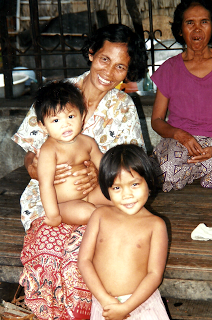Demosthenes gave wise counsel when he admonished, “Beware lest in your anxiety to avoid a war you obtain a master.” Historically, acts of declared war between tribes and nations have left regrettable havoc and loss of life. But, terrorism is different. Its intent is to manipulate and gain psychological advantage through stark fear and the savage and brutal display of destruction. Adolf Hitler proclaimed that, “Terrorism is the best political weapon, for nothing drives people harder than a fear of sudden death.” He later bragged, “Being daily better informed about their knowledge than my adversaries themselves, I argued till finally one day they applied one means that wins the easiest victory over reason: terror and fear.”
Yasser Arafat, one of recent history’s most brutal and vicious terrorists, recruited and mentored Osama Bin Laden and convinced him that terrorism works successfully, and that terrorists can be praised and rewarded by a craven world. Terrorism doesn’t require a large and expensive army. It takes only a few extremists to control the masses by sudden and horrific fear. Terrorism destroys lives of innocent civilians and personal property. It is an on purpose and calculated means of national or religious aggression, and has become a frightening phenomenon of our present global society. The acts are carried out with highly secretive planning and open and shocking execution.
No other method so successfully robs the mind of all its powers of reasoning and acting as does fear. People seem to be willing to give their enemies what they want rather than have to endure the fear of the terrorists brutally taking it away from them. And the terrorists seem to have figured it out that their only limits of terror are prescribed by the endurance of people they terrorize.
Therein lies an interesting fact” acts of terrorism can backfire on the terrorists themselves. Fear is an unpredictable intoxicant. The fumes of fear invade the brain and can actually make men combative rather than compliant. It is dangerous to play the game of terror because the terrorist never can be certain when he goes too far and his hideous acts of terror just might trip the trigger of the oppressed.
I have experienced terrorism up close and personal. My travels into Somalia, Albania, Kosovo, Serbia, Yugoslavia, Rwanda, Uganda, Congo, Lebanon, Gaza, West Bank, North Korea, Cuba, Nagorno Karabakh, Pakistan, Sudan, and even Iraq and Afghanistan have given me a better understanding about the mind of the terrorist. I have concluded that in order to change the fruit you must alter the root. Most of terrorism is fueled by the feelings of hatred based on fear of extinction, extreme despair based on perceptions of gross inequities, and utter hopelessnessbased on eradication of viable options.
I have come to believe that the most effective deterrent for the phenomenon of terror is a mass infusion of hope. Terrorism is engineered to create fear. But fear is also the necessary element to ignite terrorism. Left unchecked, terror can only escalate because it takes on a life of its own, and one act of terror demands to be answered by another act of terror. Genuine hope dispels fear and short-circuits the need for terror. The whole vicious cycle of fear and terror unravels with the introduction of genuine hope.
The real problem of terrorism comes where the entire garden of civilization is eventually overrun by the weed of terrorism, and in order to rid the garden of the noxious weed the entire garden is destroyed. You simply can’t kill everyone in order to rid the civilization of terrorists. There has to be a more excellent way. I am coming to believe that the answer to the problem of terrorism is kindness, justice, and righteousness on this earth. There is nothing stronger in the world than goodness and gentleness. I am not a dove but a hawk when it comes to protecting my country, family, and home. But, I believe it is time to try channeling our energy and creativity toward winning the hearts and minds of the people of this world.
Project C.U.R.E. is a humanitarian organization specializing in taking help and hope to many countries around the world. It has been involved in some of the most politically explosive “hot spots” in recent years. Project C.U.R.E. has discovered that if you are going to deal with the world of conflict and terrorism you have to plant seeds of hope.
Project C.U.R.E. exists to break down the destructive cycle of hopelessness. We are discovering that dealing with the element of hope is perhaps the most effective method known to strike a blow at the main root of terrorism. The weed of terrorism needs to be eradicated from the Garden of Civilization. The application of the element of hope will go a long way toward that eradication.


















